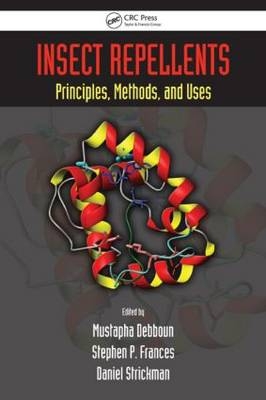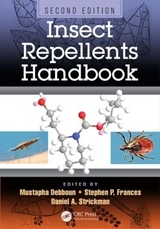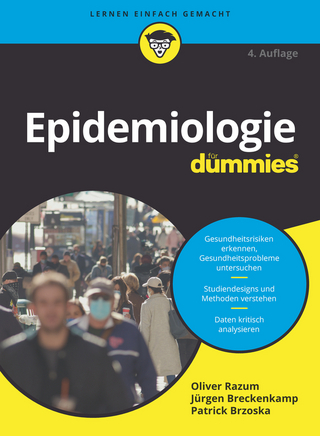
Insect Repellents
Crc Press Inc (Verlag)
978-0-8493-7196-7 (ISBN)
- Titel erscheint in neuer Auflage
- Artikel merken
Drawing together information previously found only in articles, reviews, symposia proceedings, commercial literature, and medical entomology texts, Insect Repellents: Principles, Methods, and Uses is a one-volume source on the development, evaluation, and use of repellents. It provides a thoughtful analysis of old and new information, from the ancient history of people’s attempts to avoid bites, through the use of synthetic and botanical products, to pioneering techniques for development of repellent products. After reading this book, you will be able to perform the next step in research, thoroughly evaluate data on repellents, and choose the best products for any situation. The editors introduce and define the word “phagomone” to fill the gap created by the many different meanings attributed to the word “repellent.” They present the history of repellent production that has led to the formulations currently in use and discuss the biological variety of phagomones as they function in nature. The book then delineates the methods used to assess the activity of phagomones and repellent products.
A special feature of the book is its coverage of what many consider the cutting-edge in repellent testing: automated tests of the arthropods’ responses, the use of computer models of chemistry, and the use of molecular biology methods. The book comprehensively compares active ingredients and includes an index of illustrated chemical structures that lists most chemicals involved in repellent development.
A thought-provoking discussion of the process of testing formulated products and comprehensive reviews of natural and synthetic active ingredients round out the book’s coverage. It supplies an in-depth understanding of the variety of purposes served by repellent bioassays and lays the foundation for evaluating data and designing new tests as well as developing and delivering new tools and approaches. This book provides all the information you need to give evidence-based recommendations.
Preface, M. Debboun, S. Frances, and D. Strickman Principles
History of Insect Repellents, S.J. Moore and M. Debboun
Terminology of Insect Repellents, G.B. White
Vertebrate Chemical Defense: Secreted and Topically Acquired Deterrents of Arthropods, P.J. Weldon and J.F. Carroll
Human Emanations and Related Natural Compounds that Inhibit Mosquito Host-Finding Ability, U.R. Bernier, D.L. Kline, and K.H. Posey Methods
Standard Methods for Testing Mosquito Repellents, D.R. Barnard, U.R. Bernier, R.-d. Xue, and M. Debboun
Biometrics and Behavior in Mosquito Repellent Assays, D.R. Barnard and R.-d. Xue
Animal Models in Research and Development of Insect Repellents for Human Use, L.C. Rutledge and R.K. Gupta
Techniques for Evaluating Insect Repellents, J.M. Govere and D.N. Durrheim
Use of an Olfactometer for Determining Attractants and Repellents, J.F. Butler
Discovery and Design of New Arthropod/Insect Repellents by Computer-Aided Molecular Modeling, R.K. Gupta and A.K. Bhattacharjee
Molecular-Based Chemical Prospecting of Mosquito Attractants and Repellents, W.S. Leal Products and Active Ingredients
Evaluation of Topical Insect Repellents and Factors that Affect Their Performance, S.P. Carroll
Repellents Used in Fabric: The Experience of the U.S. Military, W.C. McCain and G.J. Leach
Plant-Based Insect Repellents, S.J. Moore, A. Lenglet, and N. Hill
Considerations on the Use of Botanically-Derived Repellent Products, E.J. Gerberg and R.J. Novak
Efficacy and Safety of Repellents Containing Deet, S.P. Frances
Lipodeet: An Improved Formulation for a Safe, Long-Lasting Repellent, B. Salafsky, T. Shibuya, Y.-X. He, J. Ha, and K. Ramaswamy
Picaridin, S.P. Frances
DEPA: Efficacy, Safety and Use of N,N-Diethyl Phenylacetamide, a Multi-Insect Repellent, S. Prakash, R. Vijayaraghavan, and K. Sekhar
PMD (p-Menthane-3,8-Diol) and Quwenling, D. Strickman
IR3535® (Ethyl Butylacetylaminopropionate), G. Puccetti
Older Synthetic Active Ingredients and Current Additives, D. Strickman
Area Repellent Products, D. Strickman Uses
User Acceptability: Public Perceptions of Insect Repellents, S.P. Frances and M. Debboun
Commercially Available Insect Repellents and Criteria for Their Use, R.-D. Xue, A. Ali, and J.F. Day
Global Regulatory Perspectives on Insect Repellent Development and Registration, K.J. Sweeney
Epilogue
Prospects for the Future, D. Strickman, S.P. Frances, and M. Debboun
Appendices Index
| Erscheint lt. Verlag | 25.10.2006 |
|---|---|
| Zusatzinfo | 55 Tables, black and white; 8 Illustrations, color; 257 Illustrations, black and white |
| Verlagsort | Bosa Roca |
| Sprache | englisch |
| Maße | 178 x 254 mm |
| Gewicht | 1089 g |
| Themenwelt | Studium ► Querschnittsbereiche ► Epidemiologie / Med. Biometrie |
| Naturwissenschaften ► Chemie | |
| Weitere Fachgebiete ► Land- / Forstwirtschaft / Fischerei | |
| ISBN-10 | 0-8493-7196-1 / 0849371961 |
| ISBN-13 | 978-0-8493-7196-7 / 9780849371967 |
| Zustand | Neuware |
| Haben Sie eine Frage zum Produkt? |
aus dem Bereich



